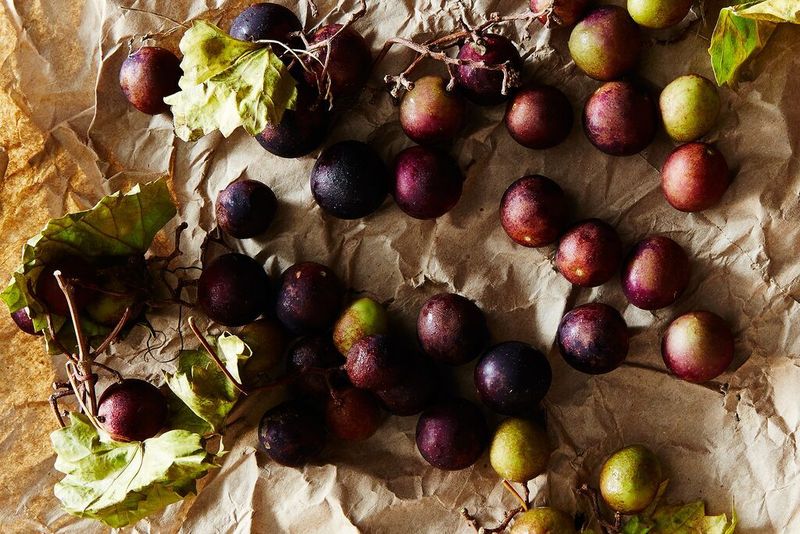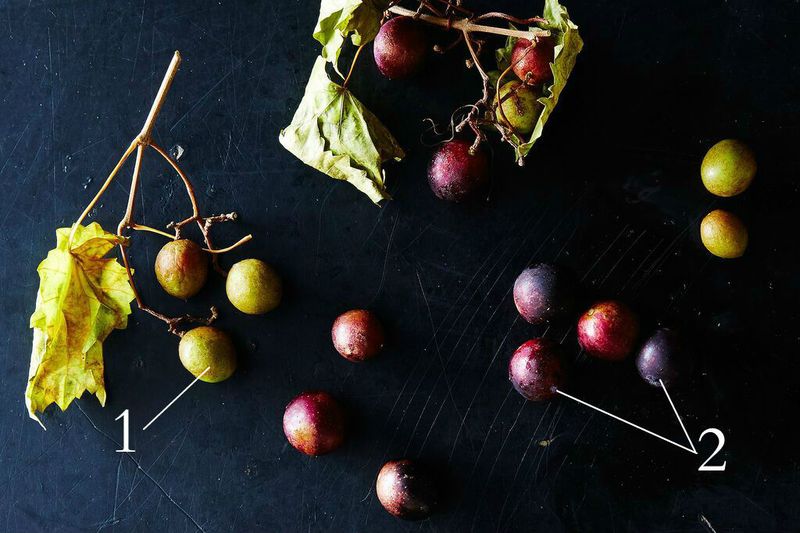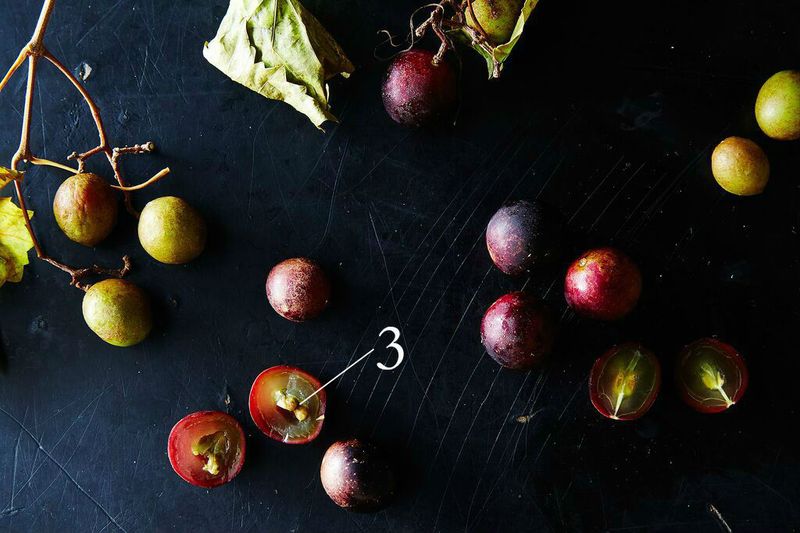Pick up this fruit of the vine while you still can.

If you’re from anywhere other than the southeastern region of the U.S., your first introduction to Muscadine grapes might have come while reading To Kill a Mockingbird:
Our tacit treaty with Miss Maudie was that we could play on her lawn, eat her scuppernongs if we didn’t jump on the arbor, and explore her vast back lot, terms so generous we seldom spoke to her, so careful were we to preserve the delicate balance of our relationship…
"Scuppernongs" might have sent you running for the dictionary, which would inform you that scuppernongs are a type of Muscadine grapes. The word "scuppernong" is usually used to refer to all of the bronze-colored varieties. (The name comes from a specific cultivar—one of hundreds—of Muscadine grape, but is now used to refer to all the light-colored Muscadines.)
The word "Muscadine," on the other hand, typically refers to the so-called "black" types, which are deep red or purple (2, below) when ripe and green (1) when unripe.

Although they are popular in the South, Muscadine grapes have a few traits working against them in their bid for grape popularity. (They're tasty enough to stand the test of time, though: The oldest grapevine in the U.S. is a scuppernong vine that is hundreds of years old):
- Muscadine grapes are native to the southeastern United States; they like warm and humid climates, so they can’t grow in the same types of places other kinds of grapes can. This means they can be hard to get your hands on if you aren’t in the Southeast—your best bet is a well-stocked grocery store. (The grapes you see here were sent to us from Alabama by Melina Hammer.)
- Like Concord grapes, Muscadines have substantial seeds (3, below) and are “slip-skin,” meaning their skin and squishy insides easily separate from one another. Since Muscadines tend to have thicker skins, this a benefit when eating them out of hand—although the skin is edible, some people prefer to squeeze each grape so the pulp goes in their mouth and they can discard the skin (and spit out the seeds).
-
They can be challenging to harvest. Table grapes are harvested in bunches: not so with Muscadine grapes. The grapes ripen at different times, so they need to be picked individually, checking first for color and then feeling them to make sure they aren’t too hard—they won’t continue to ripen once picked. Luckily they are much larger than table grapes, so this task isn't as onerous as it would be with smaller grapes.

Of course you aren't limited to eating Muscadines fresh—you can bake with them or turn them into jelly, jam, and sauce. Muscadine juice can be used to make sorbet and cocktails, or try your hand at making Muscadine wine.
And the skins and seeds of Muscadines isn't always discarded. The grapes can be used, peels included, to make pie. Muscadines are also often processed to extract their juice; this leaves behind a lot of waste in the form of skin, pulp, and seeds. Mississippi State University nutritionist Betty J. Ector has found that a powdered-Muscadine purée (made from the skins and pulp) is a good source of resveratrol and dietary fiber—more fiber than found in oat or rice bran. In this case, cooking with scraps isn't just a way to prevent food waste, it can be really good for you, too.
Tell us: How do you like to use Muscadine grapes?
Photos by James Ransom




See what other Food52 readers are saying.